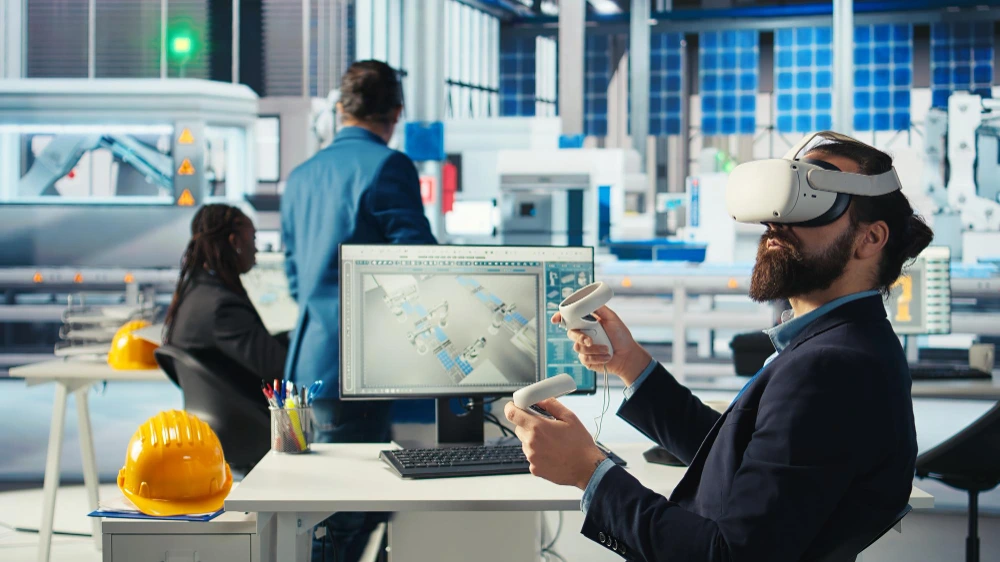Future of Construction Estimation
Estimation Expert: Hashim Khan – Senior Construction Estimation Expert with over 5 years of experience in the field.
Interviewer
Thanks for joining us. to start — what are the biggest shifts happening in construction estimation right now?
Estimation Expert
The future of construction estimation is all about data and automation. Estimators are moving away from time-consuming spreadsheets and switching to smart tools that use rich cost databases, BIM technology, and AI-powered takeoffs. This means faster, more accurate, and more consistent estimates. Plus, by using past project data, teams can predict real costs with greater confidence. Cloud platforms and trusted data providers tools like RSMeans are driving this exciting transformation.
Interviewer
AI is a buzzword — how is AI actually affecting estimating work in 2025?
Expert
AI is being used for three practical things right now:
- Automating digital takeoffs from drawings/point clouds.
- Suggesting line items and assemblies based on similar past projects,
- Flagging risk and likely cost overruns by pattern-matching project attributes with historical outcomes.
That’s not replacing estimators — it’s augmenting them. Peer-reviewed work and industry write-ups show AI-augmented estimators can be both faster and more accurate when used carefully.
Hire UtopianTakeoffs for Construction Estimation
For companies looking to stay ahead in construction, hiring a skilled estimation expert is a game-changer. An experienced estimator like UtopianTakeoffs not only provides accurate, data-driven cost forecasts but also brings deep knowledge of AI-assisted tools, BIM integration, and risk modeling. They ensure your project budgets are realistic, help identify cost-saving opportunities, and validate automated estimates, giving your team confidence in every financial decision. In today’s fast-evolving construction landscape, having a dedicated estimation expert is essential for efficiency, accuracy, and project success.
Interviewer
Are estimators adopting BIM and integrated workflows?
Expert
BIM integration is changing the game in construction estimation. It bridges the gap between design models and building cost calculations, making the whole process smoother and faster. When estimating software can read BIM objects and automatically link them to cost items, any design change instantly updates the budget. This helps teams explore options quickly and keep costs under control from the very start. However, adoption still depends on the firm’s size and project needs.
Interviewer
What role do cost databases and real-time price feeds play now these days?
Expert
Accurate cost data is the heart of modern estimation. Reliable sources like RSMeans and Gordian provide up-to-date unit prices, productivity rates, and regional cost indexes that keep projects on track. In 2025, this data is now available through cloud-based tools and APIs, allowing estimators to work with real-time market prices instead of outdated figures. This smart connectivity makes every estimate more accurate, transparent, and trustworthy.
Interviewer
How are firms handling risk and contingencies now?
Expert
Estimators today are taking a smarter approach to risk. Instead of relying on one fixed cost number, they now use scenario-based estimating and probabilistic models to see a full range of possible outcomes. This means they can predict how things like supply chain delays or price changes might affect the budget. Thanks to AI and advanced analytics, these risk tools are no longer just for specialists — they’re becoming part of everyday estimating software.

Interviewer
What skills you suggest will estimators need in 2025?
Expert
Strong estimating skills are still essential, but today’s top estimators need more than just technical know-how. They must be comfortable working with data, understanding BIM models, checking AI-generated results, and analyzing risk models. Just as important are communication skills — being able to clearly explain estimates, data insights, and assumptions to clients and project teams. In 2025, great estimators are both tech-savvy and people-smart.
Interviewer
Are there concerns — data quality, trust in AI, job displacement?
Expert
Yes, there are challenges too. The biggest ones include keeping cost data accurate and region-specific, understanding how AI makes its recommendations, and avoiding the trap of relying on automation too much. Estimators still need to double-check AI results and use their own judgment. As technology takes over repetitive tasks, their role is evolving — focusing more on strategy, validation, and smart decision-making than manual number-crunching.
Interviewer
What about market outlook — are estimating software and tools growing?
Expert
The demand for construction estimation tools and technology is booming. More and more companies are investing in AI-powered takeoff tools, estimating software, and cloud-based cost data to make their preconstruction process faster and more accurate. Market reports show that this trend is only growing as firms look for smarter, more efficient ways to plan and manage project costs.
Interviewer
Any trends around sustainability or embodied carbon in estimates?
Expert
Estimators are now thinking beyond just costs. They’re starting to include lifecycle and carbon impact in their early-stage budgets. New tools can connect building materials to their carbon footprints, helping teams compare cost versus environmental impact during the design phase. As more owners and regulators push for sustainable, low-carbon construction, this trend is quickly becoming a key part of modern estimation.
Interviewer
Final quick advice to firms wanting to modernize their estimating function?
Expert
Start small and keep it practical. First, organize your cost data and standard assemblies. Next, use BIM-linked workflows where they make sense. Try AI-assisted takeoffs on a few projects and see what works. And don’t forget to train your team on data management and validating AI results. There’s no need to overhaul everything at once — improve gradually, measure the results, and scale what truly works.

